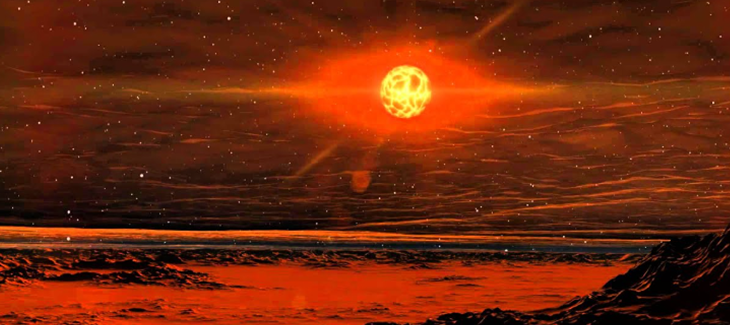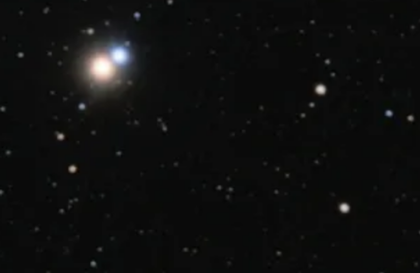Betelgeuse is a supergiant star located about 642 light years from Earth. It belongs to the class of red giants and is known for its visible red color, which indicates the low temperature of the outer atmosphere of this star. Although there is no physical evidence that Betelgeuse is orbiting any planet, the possibility cannot be completely ruled out. It is possible that Betelgeuse’s habitable zone could contain a planet that would be located in the outermost regions of the star system. If a planet existed in a star system, it could host many moons due to its large Hill sphere.
Betelgeuse is a supergiant star located in the constellation Orion, with an estimated radius of 600 to 1,400 times that of the Sun. If it were placed at the center of our solar system, it would extend beyond the asteroid belt and engulf the orbits of Mercury, Venus, Earth, and Mars. The mass of Betelgeuse is still unknown, so it is impossible to calculate the orbital period of the planet around it. However, calculations suggest that a planet in the habitable zone orbits the star in 2180 years.
Credit: Public. NRAO. EDU
Although planets have been discovered around other stars, no evidence has been found that planets orbit Betelgeuse. This is due to the fact that the formation of a planet takes a long time, and Betelgeuse is already an old star. Additionally, Betelgeuse appears in stories such as Planet of the Apes and The Foundation, where it was implied to have planets. However, it is not possible to give a definitive answer as to whether Betelgeuse has planets in its orbit.
As antispinwards has commented, planets orbiting Betelgeuse will face significant challenges such as radiation and the gravitational forces of a supernova. It is unlikely that life forms could survive such an explosion. The planets closest to Betelgeuse will be destroyed, while the outer planets will experience increased levels of radiation and have a chance to survive. Some of these planets may be in the habitable zone and have a thicker crust that could provide some protection.
Credit: SirSpunkyThe Hunk
To date, there are no direct observations of planets orbiting Betelgeuse. However, there are several methods that suggest that there may be planets in this system:
- Studying a star’s own motion can indicate the possibility of planets, since the masses of planets affect the motion of their parent stars.
- Changes in the brightness of Betelgeuse may indicate the presence of objects such as planets or disks of dust.
- Some chemical elements found in the atmosphere of stars can be indicators of planetary influence.
Banner image: SirSpunkyThe Hunk
Image credit:
https://www.youtube.com
https://twitter.com
https://www.youtube.com





